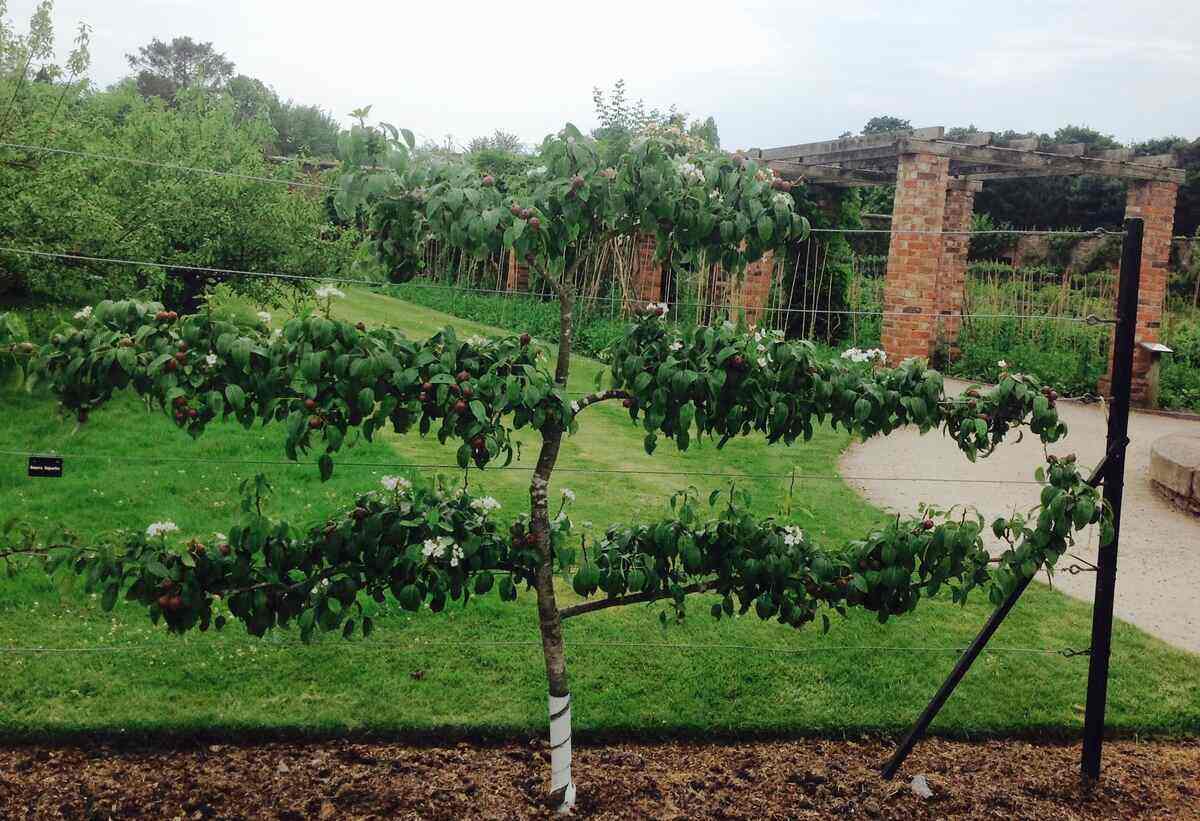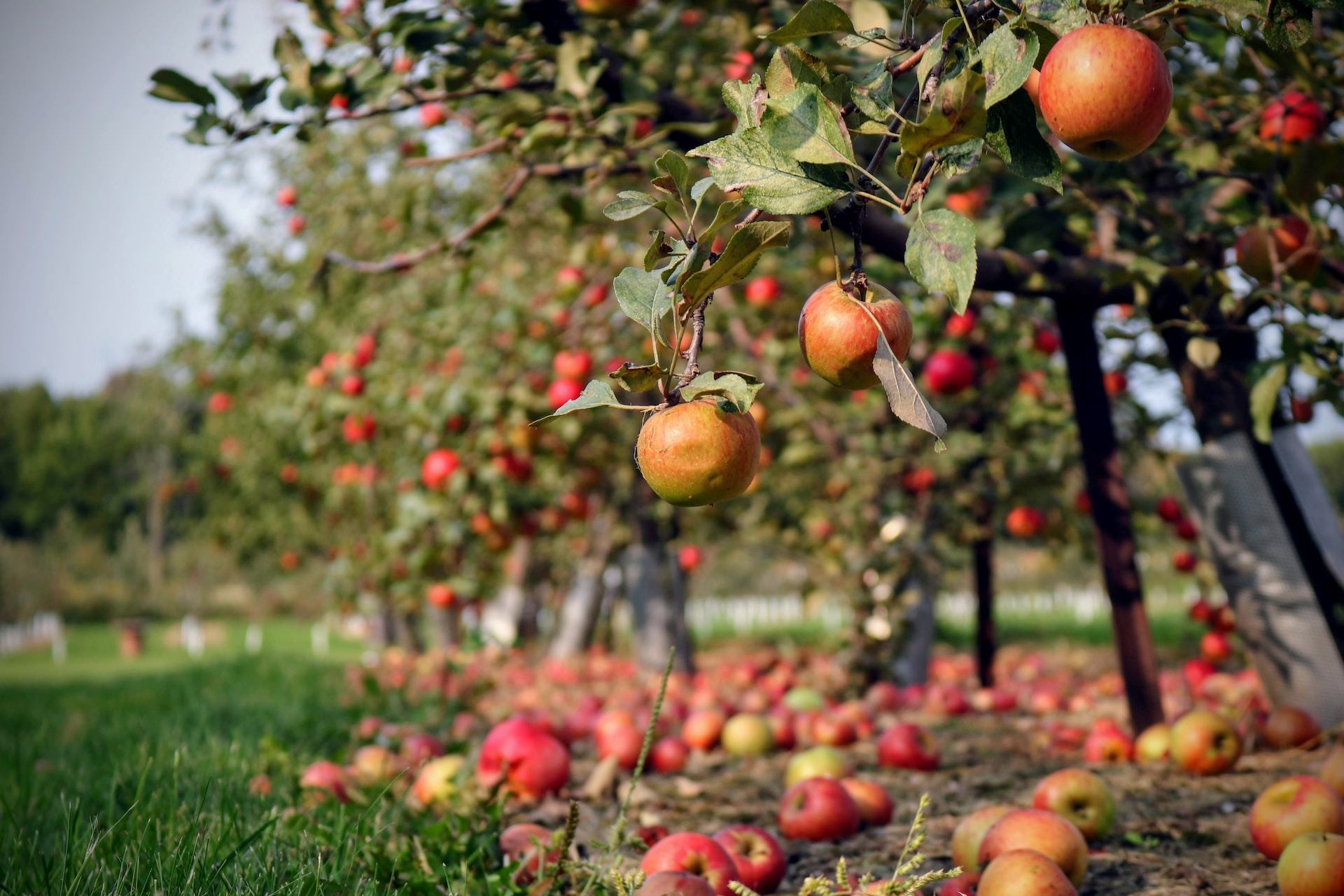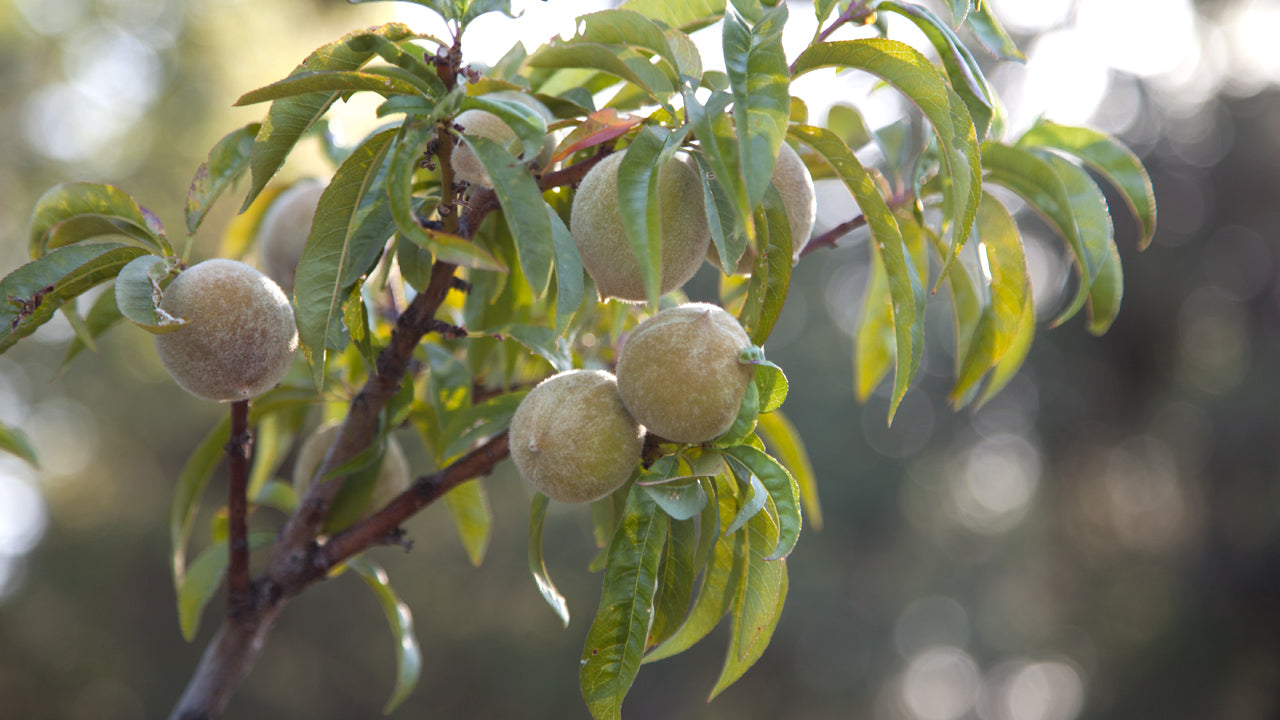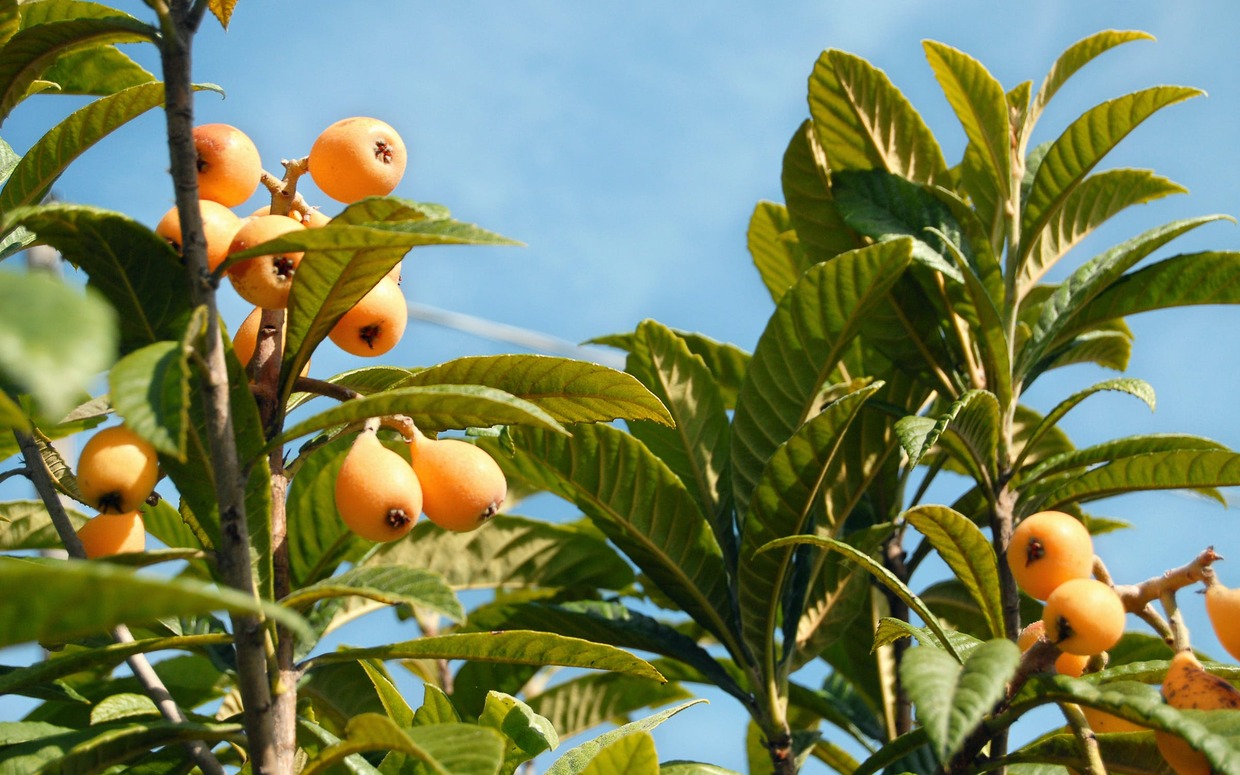Home>Gardening Tips and Tricks>Problem Solving>When To Graft Fruit Trees


Problem Solving
When To Graft Fruit Trees
Published: November 1, 2023
Learn when to graft fruit trees and discover effective problem-solving techniques for successful tree grafting. Become a pro at grafting fruit trees with our expert tips and advice.
(Many of the links in this article redirect to a specific reviewed product. Your purchase of these products through affiliate links helps to generate commission for Chicagolandgardening.com, at no extra cost. Learn more)
Table of Contents
Introduction
Grafting fruit trees is a practice that has been used for centuries to improve the quality of fruit trees and increase their yield. It involves combining two different fruit tree varieties, the scion and the rootstock, to create a new plant with desirable characteristics. This technique allows gardeners and farmers to create unique and customized fruit trees that are better adapted to specific growing conditions.
The process of grafting involves joining the scion, which is a shoot or bud from the desired fruit tree variety, with the rootstock, which provides the root system and support for the tree. Once the graft is successful, the new tree will bear fruit with the characteristics of the scion. This enables growers to create fruit trees that have traits such as disease resistance, improved flavor, or increased productivity.
Grafting fruit trees offers several benefits. It allows growers to propagate exact clones of a specific variety, ensuring consistency in fruit quality. It also enables the combination of desirable traits from different varieties, such as early fruiting, resistance to pests or diseases, or adaptability to specific soil conditions. Grafted fruit trees also have the advantage of producing fruit at an earlier age compared to trees grown from seeds, allowing for quicker harvests.
Before embarking on grafting fruit trees, there are certain factors that need to be considered. Firstly, it is important to choose compatible scion and rootstock combinations. The scion and rootstock must belong to the same species or be closely related for successful grafting. Additionally, the size and vigor of the scion and rootstock should be compatible to ensure proper growth and development of the grafted tree.
Timing is crucial when it comes to grafting. Different fruit tree species and varieties have different optimal times for grafting, depending on factors such as dormancy, temperatures, and seasonal cycles. It is important to graft during the right season to give the grafted tree the best chance of survival and success.
In the following sections, we will delve deeper into the benefits of grafting fruit trees, the factors to consider before grafting, the best time to graft, the steps involved in grafting, tips for successful grafting, and common mistakes to avoid. By following these guidelines, you will be well-equipped to embark on your own fruit tree grafting journey and enjoy the rewards of growing customized, high-quality fruit trees.
Benefits of Grafting Fruit Trees
Grafting fruit trees offers numerous benefits for both commercial growers and home gardeners. By combining the desired traits of different fruit tree varieties, grafting allows for the creation of unique and customized trees with improved quality and productivity. Here are some of the key advantages of grafting fruit trees:
- Consistency in Fruit Quality: Grafting enables growers to propagate exact clones of a specific fruit tree variety, ensuring consistent fruit quality year after year. This is particularly important for varieties that are known for their unique flavor, texture, or appearance.
- Improved Disease Resistance: Some fruit tree varieties may be susceptible to certain diseases or pests. By grafting onto a rootstock with resistance to these problems, growers can produce fruit trees that are more resistant to common diseases and pests, reducing the need for chemical interventions.
- Increased Productivity: Grafted fruit trees have the potential to bear fruit at an earlier age compared to trees grown from seeds. This means quicker harvests and a faster return on investment for growers.
- Adaptability to Different Growing Conditions: Different rootstocks have varying levels of tolerance to environmental conditions such as soil types, drought, or cold temperatures. By selecting the appropriate rootstock, growers can ensure that their grafted trees are well-adapted to specific growing conditions and have a higher chance of success.
- Combining Desirable Traits: Grafting allows the combination of desirable traits from different fruit tree varieties. For example, a grower may graft a scion with excellent fruit flavor onto a rootstock with vigorous growth. This results in a tree that not only produces delicious fruit but also has a strong and healthy root system.
- Space Optimization: Grafting allows multiple fruit tree varieties to be grown on the same tree, saving space in the orchard or garden. This is particularly advantageous for home gardeners with limited space who want to grow a variety of fruits.
- Preservation of Heirloom Varieties: Grafting is an essential technique for preserving heirloom fruit tree varieties that may be rare or endangered. By grafting scions from these heritage varieties onto suitable rootstocks, growers can ensure the continuation of these unique and valuable genetic resources.
Grafting fruit trees opens up a world of possibilities in terms of creating customized and resilient trees that can thrive in different conditions and produce high-quality fruit. The ability to combine desirable traits, ensure consistent fruit quality, and increase productivity makes grafting an essential tool for both professionals and hobbyists in the world of fruit tree cultivation.
Factors to Consider Before Grafting
Before embarking on the grafting process, there are several important factors to consider. These factors will help ensure the success of the graft and the long-term health of the grafted fruit tree.
- Compatibility: It is essential to choose compatible scion and rootstock combinations for successful grafting. The scion and rootstock must belong to the same species or be closely related. This ensures that the vascular tissues of the scion and rootstock can form a functional connection, allowing for the exchange of water, nutrients, and hormones.
- Size and Vigor: The size and vigor of the scion and rootstock should be compatible to ensure proper growth and development of the grafted tree. A scion that is too large compared to the rootstock may result in poor growth, while a scion that is too small may struggle to establish itself.
- Disease Resistance: Consider the disease resistance of the scion and rootstock. If the scion is susceptible to certain diseases, grafting onto a rootstock with resistance to those diseases can help protect the grafted tree. This is particularly important in areas where specific diseases are prevalent.
- Growth Habit: The growth habit of the scion and rootstock should be considered to ensure compatibility. The graft union, where the scion and rootstock are joined, should have a similar growth pattern to prevent structural issues and promote healthy development.
- Environmental Conditions: Take into account the environmental conditions of your growing area. Different rootstocks have varying tolerances to factors such as cold temperatures, drought, and soil types. Select a rootstock that is well-adapted to the specific conditions of your region.
- Grafting Success Rate: Different fruit tree species and varieties have varying success rates for grafting. It is important to research and understand the success rates of the specific scion-rootstock combinations you plan to use. This will help manage expectations and increase the chances of a successful graft.
- Availability of Materials: Ensuring the availability of quality scions and rootstocks is crucial. Plan ahead and source your materials from reputable nurseries or suppliers to ensure that you have access to healthy and viable grafting materials.
By considering these factors before grafting, you can increase the likelihood of a successful graft and the establishment of a healthy and productive grafted fruit tree. Proper planning, research, and attention to detail will set the foundation for a successful grafting endeavor.
Best Time to Graft Fruit Trees
The timing of grafting plays a crucial role in the success of the graft and the subsequent growth and development of the grafted fruit tree. The best time to graft fruit trees varies depending on the specific species and varieties, as well as the local climate and growing conditions. However, there are general guidelines that can help determine the optimal time for grafting.
The most common and successful time for grafting fruit trees is during the dormant season, typically in late winter or early spring before buds begin to swell. This period provides the ideal conditions for grafting because the tree’s metabolism slows down, allowing the graft union to heal and establish more effectively.
In regions with mild winters, grafting can be done in late winter when the chance of frost has passed and temperatures are consistently above freezing. This allows the graft to heal before the tree enters its active growth phase in spring.
In colder climates, grafting can be done in early spring as soon as the weather begins to warm up. It is important to wait until the soil thaws and becomes workable, allowing for successful transplantation of the grafted trees.
It is essential to consider the specific requirements of the fruit tree species and varieties when determining the best time for grafting. Some fruit tree species, such as apples and pears, are more tolerant of grafting during the winter months, while others, like peaches and plums, are best grafted when temperatures are consistently warmer.
It is also important to note that certain fruit tree varieties may have specific grafting requirements. Some varieties require early grafting to ensure successful compatibility between the scion and rootstock.
Ultimately, it is recommended to conduct thorough research and consult local horticulture experts or experienced grafters to determine the best grafting time for specific fruit tree species and varieties in your region. By grafting at the optimal time, you increase the chances of successful grafting, healthy tree establishment, and ultimately, bountiful harvests of quality fruit.
Steps for Grafting Fruit Trees
Grafting fruit trees is a skill that can be learned and mastered with practice. While there are several different grafting techniques, the following steps outline a common approach to grafting fruit trees:
- Select the Right Materials: Choose a healthy scion, which is a shoot or bud from the desired fruit tree variety, and a compatible rootstock. The scion should ideally be collected during the dormant season, while the rootstock should be strong and vigorous.
- Prepare the Tools: Gather the necessary tools, including a sharp grafting knife, grafting tape or rubber bands, and grafting wax or sealant. Ensure that your tools are clean and sterilized to minimize the risk of disease transmission.
- Prepare the Scion and Rootstock: Make a clean, slanting cut at the base of the scion and a corresponding cut on the rootstock. These cuts should match up as closely as possible to ensure a tight fit and proper alignment.
- Join the Scion and Rootstock: Carefully align the cut surfaces of the scion and rootstock, ensuring that the cambium layers (the thin layer of tissue just below the bark) are in contact with each other. Press the two pieces together firmly to form a tight union.
- Secure the Graft: Use grafting tape or rubber bands to tightly wrap the graft union, ensuring that it is held securely in place. This helps to maintain contact between the scion and rootstock and provides support during the healing process.
- Protect the Graft: Apply grafting wax or sealant to the graft union to protect it from moisture loss and infection. This helps to create a favorable environment for the healing and development of the graft.
- Provide Proper Care: Place the grafted tree in a suitable location with adequate sunlight and water. Monitor the graft for signs of growth and adjust watering as needed. It is important to provide proper care and attention to allow the graft to take and the grafted tree to establish.
- Monitor and Prune: Regularly monitor the grafted tree for any signs of graft union failure, such as wilting or discoloration. Prune any competing shoots or side branches to direct energy towards the growth of the grafted scion.
Remember, practice, patience, and attention to detail are key to successful grafting. It may take time and several attempts to perfect the technique, but with each grafting experience, you will gain valuable knowledge and skills to improve your success rate.
Tips for Successful Grafting
Grafting fruit trees can be a rewarding and fulfilling experience. To increase the chances of a successful graft, consider the following tips and techniques:
- Choose Healthy Scions and Rootstocks: Select scions and rootstocks that are free from diseases, pests, or physical damage. Healthy plant materials are more likely to establish successful grafts.
- Time your Grafting Properly: Follow the recommended grafting time for the specific fruit tree species and varieties you are working with. Grafting during the dormant season when the trees are not actively growing increases the success rate.
- Make Clean and Precise Cuts: Use a sharp grafting knife to create clean and precise cuts on the scion and rootstock. This helps ensure a tight fit and proper contact between the two pieces.
- Align the Cambium Layers: The cambium layer is responsible for the growth of new tissue and plays a crucial role in graft union formation. Ensuring that the cambium layers of the scion and rootstock are in contact greatly improves the success of the graft.
- Secure the Graft Properly: Use grafting tape or rubber bands to firmly secure the graft union. This ensures that the scion and rootstock remain aligned and in close contact during the healing process.
- Protect the Graft Union: Apply grafting wax or sealant to the graft union to protect it from drying out or being exposed to pathogens. This will create an optimal environment for healing and reduce the risk of infection.
- Provide Adequate Care and Maintenance: Keep the grafted tree well-watered and ensure it receives appropriate amounts of sunlight. Monitor the graft union for any signs of stress or failure and address any issues promptly.
- Learn and Practice Different Grafting Techniques: Familiarize yourself with various grafting techniques such as whip-and-tongue, cleft grafting, or bud grafting. Experiment with different methods to find the one that works best for you and the specific fruit tree varieties you are grafting.
- Seek Guided Instruction: If you are new to grafting, consider seeking guidance from experienced grafters or attending grafting workshops. Learning from experienced grafters can provide valuable insights and improve your technique.
- Keep Records: Maintain records of your grafting activities, noting the date, technique, and the specific scion and rootstock used. This information will help you track your progress, analyze success rates, and make informed decisions in future grafting endeavors.
Remember that grafting can take time to master, so do not get discouraged by initial failures. Each graft is an opportunity to learn and improve your skills. With practice and attention to detail, you will increase your success rate and be on your way to creating beautiful, customized fruit trees.
Common Mistakes to Avoid
Grafting fruit trees is a skill that requires practice, patience, and attention to detail. To increase your chances of a successful graft, it is important to be aware of common mistakes that can hinder the process and compromise the health of the grafted tree. Here are some common mistakes to avoid:
- Poor Selection of Scions and Rootstocks: Choosing unhealthy or incompatible scions and rootstocks can impede the success of the graft. Select scions and rootstocks that are free from diseases, pests, and physical damage, and ensure they are compatible for the grafting process.
- Improper Timing: Grafting at the wrong time can result in graft failure. Follow the recommended grafting time for the specific fruit tree species and varieties, ensuring that the trees are in their dormant stage and not actively growing.
- Inadequate Cleanliness and Sterilization: Using unclean or unsterilized tools can introduce pathogens that may lead to graft failure or disease transmission. Always clean and sterilize your grafting tools before each use to minimize the risk of contamination.
- Insufficient Alignment of Cambium Layers: The cambium layer is critical for graft union formation. Failing to align the cambium layers of the scion and rootstock properly can inhibit the flow of nutrients and hinder successful grafting.
- Inadequate Securing of Graft Union: Insufficiently securing the graft union can result in poor contact between the scion and rootstock or misalignment. Ensure that the graft union is firmly and tightly wrapped to maintain proper alignment and contact between the two plant parts.
- Neglecting Aftercare: Improper care and maintenance after grafting can negatively impact the success of the graft. Keep the grafted tree well-watered, protect it from extreme weather conditions, and monitor for any signs of stress or graft failure. Adequate aftercare is essential for the survival and proper development of the grafted tree.
- Using Incorrect Grafting Techniques: Different fruit tree species and varieties may require specific grafting techniques for optimal success. Using incorrect grafting techniques or not following proper procedure can hinder the grafting process and result in graft failure.
- Overlooking Training and Support: Failure to properly train and support the grafted tree can lead to structural issues and poor growth. Prune and train the grafted tree as necessary to promote balanced growth and proper development.
- Lack of Patience: Grafting takes time and patience. Rushing the process or prematurely evaluating the success of the graft can lead to unnecessary mistakes. Give the graft enough time to heal and establish before making any judgments.
- Not Learning from Mistakes: Every grafting experience is an opportunity to learn and improve your technique. Take note of any mistakes or failures encountered and seek ways to rectify them in future grafting attempts.
By avoiding these common mistakes, you increase the likelihood of successful grafting and the development of healthy, productive fruit trees. Remember that grafting is a skill that improves with practice, so be patient, learn from each grafting experience, and enjoy the journey of growing your own customized fruit trees.
Conclusion
Grafting fruit trees is a fascinating and rewarding practice that allows for the creation of unique and customized trees with improved quality, productivity, and adaptability. By combining different fruit tree varieties, grafting enables growers to harness the best traits of each variety, resulting in trees that bear delicious fruit, have increased disease resistance, and thrive in specific growing conditions.
Before embarking on the grafting process, it is important to consider factors such as compatibility, size and vigor, disease resistance, and environmental conditions. By paying attention to these factors, you can increase the chances of a successful graft and the establishment of healthy and productive grafted fruit trees.
Following the proper steps for grafting, such as selecting the right materials, making precise cuts, aligning cambium layers, securing the graft, and providing proper care, will further enhance the success of your grafting endeavors. Additionally, by avoiding common mistakes and continuously learning and improving your grafting techniques, you can increase your success rate and create beautiful and productive fruit trees.
So, whether you’re a commercial grower looking to enhance your orchard’s productivity or a home gardener seeking to add variety to your fruit collection, grafting fruit trees offers endless possibilities. With practice, patience, and attention to detail, you can master the art of grafting and enjoy the fruits of your labor for years to come.







